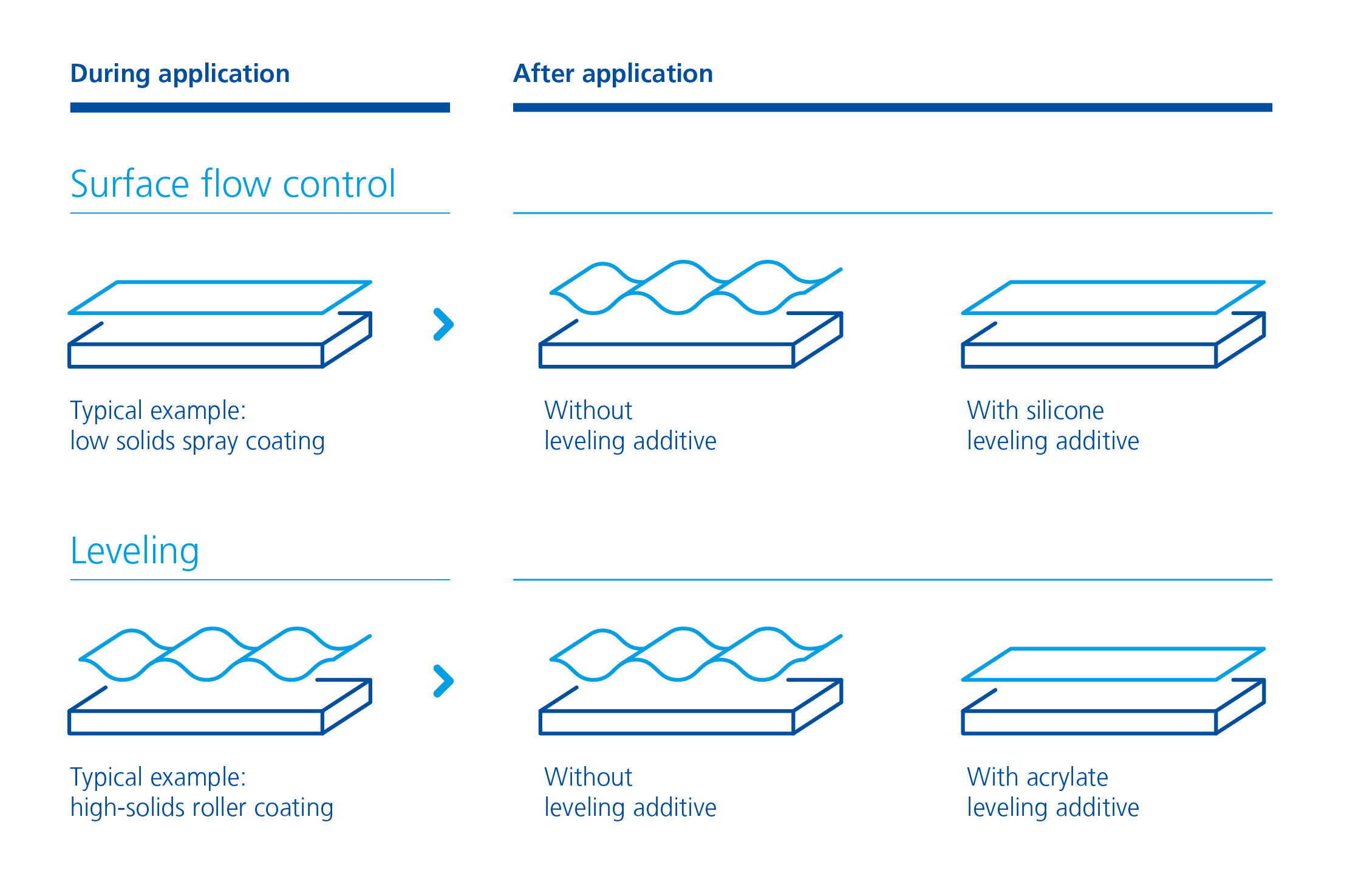
The formation of Bénard cells also leads, in many cases, to paint surfaces that are not uniformly smooth; rather, pronounced deformation or surface textures can occur. The coating exhibiting non-optimal flow will show varying degrees of a defect called “orange peel”.
Depending on the drying conditions and the characteristics of the solvent mixture, the drying of the wet film or resin solution can occasionally become so strongly influenced by surface defects that the entire top surface of the film is completely disrupted. This extreme effect is called “air-draft sensitivity” and is generally caused by air-draft conditions that place extreme stress on the upper layers of the coating. It is an especially common occurrence in furniture coatings.

The wave-scan simulates visual observation. The wavy brightness pattern on the surface is optically scanned in the same way the human eye sees it. A laser point light source illuminates the sample at an angle of 60 °; a detector on the other side then measures the reflected light. The wave-scan device is moved over the sample across a defined range and measures the optical brightness profile from point to point.
The wave-scan analyzes the size of the structures: in order to take into consideration the resolution of the eye at different distances, mathematical filtering is used to divide the optical profile into long-wave (LW) and short-wave (SW) sections.
On this website we use cookies and similar functions to process end device information and personal data. The processing is used for purposes such as to integrate content, external services and elements from third parties, statistical analysis/measurement, personalized advertising and the integration of social media. Depending on the function, data is passed on to up to 9 third parties and processed by them. This consent is voluntary, not required for the use of our website and can be revoked at any time using the icon on the bottom left.